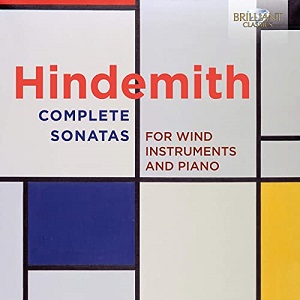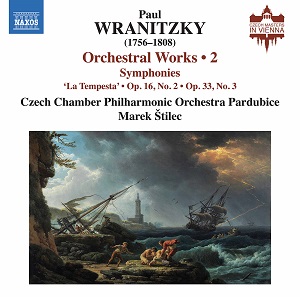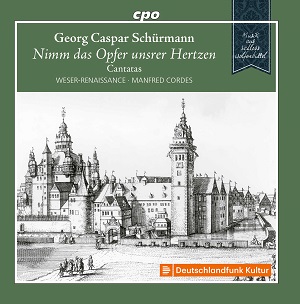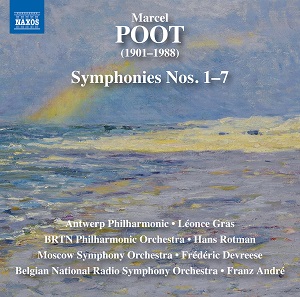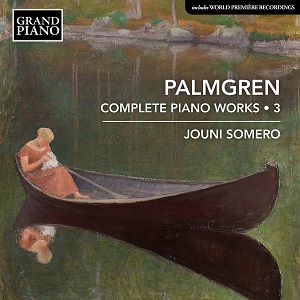Views and reviews of over-looked and under-appreciated culture and creativity
Friday, October 29, 2021
#ClassicsaDay #OctoberOctet Week 4
Thursday, October 28, 2021
Johann Matthais Sperger - Double Bass Concertos Worthy of Haydn
But unlike most virtuosi, Sperger was quite comfortable composing other forms of music. His catalog includes cantatas, sonatas, 44 symphonies, and 18 concertos.
This CPO's second release of Sperger's music. Like the first, it includes a mixture of symphonies and double bass concertos.
His Symphony No. 15 in A major is a succinct masterpiece. It lands stylistically between Haydn and Mozart. It has Mozart's lightness. And it has the inherent drama of Haydn's Sturm und Drang works (albeit not too stormy).
Sperger knew his instrument well. In the 1700s, the double bass in orchestras just reinforced the cello line. It seldom appeared in chamber ensembles, and almost never as a solo instrument. Sperger shows the capabilities of this instrument and makes it sing.
Sperger's music requires a solid set of skills. The melodies must be played with agility. There are double stops and other bowing effects. A good deal of the time the bassist is playing in the upper register. Maintaining intonation there is especially difficult.
But it's worth it. These aren't novelty pieces. They're well-crafted works that are enjoyable to listen to.
Contrabassist Roman Patkolo is up to the challenges. His intonation is solid, and he plays with a clean, sonorous tone. My only quibble is with the recording itself. Sometimes his instrument isn't as prominent in the mix as I'd like it to be.
If you're looking for a slightly different take on Classical Era music, give this disc a listen. Johann Matthias Sperger is a composer worth rediscovering.
Johann Matthias Sperger
Double Bass Concertos Nos. 1 & 8; Sinfonia No. 15
Roman Patkolo, contrabass
Sudwestdeutsches Kammerorchster Pforzheim; Douglas Bostock, conductor
CPO 555 404-2
Wednesday, October 27, 2021
#ClassicsaDay #OctoberOctet Week 3
10/18/21 Johan Svendsen - String Octet in A major Op 3
The Norwegian composer Johan Svendsen was a close friend of Wagner. This 1865 octet was one of the works that made his reputation as a composer.10/19/21 Reinhold Glière - String Octet in D Major, Op. 5
Glière dedicated his 1903 octet to his violin teacher, Jan Hřímalý. Origionally from Bohemia, Hřímalý taught at the Moscow Conservatory for 46 years.10/20/21 Josef Myslivececk - Wind Octet No. 1
Myslivececk's octet was written in 1178. It features two each of clarinets, oboes, horns, and bassoons.10/21/21 Howard Ferguson - Octet Op. 4
Ferguson's 1933 octect combined wind and stringed instruments. It was scored for a string quartet plus clarinet, horn, bassoon, and double bass.10/22/21 Jean Francaix - Octet
Francaix completed his octet in 1972. It's scored for 5 strings (2 violins, viola, cello, bass) and 3 winds (clarinet, bassoon, horn).Tuesday, October 26, 2021
Filippo Farinelli steers Hindemith Sonatas for Wind Instruments and Piano project
Having the same pianist throughout the set provides a degree of performance continuity. The album was also recorded in the same studio with the same production team for all eleven works. So the sound is consistent throughout the program.
And what a program. Collectively, the sonatas show the breadth of Hindemith's imagination. And they also demonstrate the mastery of his craft.
Hindemith was an accomplished chamber musician as a pianist, violinist, and violist. He well understood the conversational nature of the genre. In each of these sonatas, both performers stand on equal footing.
Hindemith also understood the instruments he was writing for. He tailored the music to the wind instrument he wrote it for. The capabilities of the instrument shape the melodic outlines. And sometimes they even determine the style.
Filippo Farinelli and his colleagues are all fine performers. These are top-notch readings for these sonatas.
This is a great collection for anyone interested in 20th Century music. Hindemith was a practical-minded composer. He wanted to give every instrument its own sonata. He wanted those sonatas to be rewarding to play. And most importantly, he wanted the sonatas to be music audiences wanted to hear.
This collection shows he succeeded on all counts.
Paul Hindemith: Complete Sonatas for Wind Instruments and Piano
Filippo Farinelli, piano; various artists
Brilliant Classics 95755
2 CD Set
Monday, October 25, 2021
Renata Dubinskaite Gives Luminuous Performances of Barbara Strozzi
Barbara Strozzi performed at these salons, often singing her own compositions. Many of these works saw publication. Strozzi's credited as the most-published composer of secular music in the 17th Century.
This release presents a selection of her solo vocal music. The program draws from six of her eight published collections. These works were presumably composed by Strozzi for her own performances. And as such, they provide a hint of what she may have sounded like.
Strozzi's vocal lines are beautifully crafted. Ornamentation is used sparingly (for the period). What's most important is the contour of the line, and how it illustrates the text.
Renata Dubinskaite delivers some wonderful performances. She sings with a clean, clear tone that is simply beautiful. The Canto Fiorito provides able -- if muted -- support.
That's as it should be. When Strozzi sang she accompanied herself on the lute or theorbo. So those gathered intellectuals would have heard one voice and one instrument.
Expanding that accompaniment to two or three remains true to the music's intimacy. This was quiet music, designed for introspection and contemplation. And in this recording, it's also luminous.
The number of Barbara Strozzi recordings is on the rise. I'd place this near the top of the list. Dubinskaite and the Canto Fiorito perform the music well. And they capture the personality of Barbara Strozzi -- both the composer and original performer of these works.
Barbara Strozzi: La Voce Sola
Renata Dubinskaite, mezzo-soprano
Canto Fiorito
Brilliant Classics
Friday, October 22, 2021
#ClassicsaDay #OctoberOctet Week 2
10/11/21 Igor Stravinsky: Octet
This octet has a very unusual combination of instruments. It comprises of a flute, two clarinets (in B-flat and A), two bassoons, two trumpets (in C and A), and two trombones (tenor and bass).10/12/21 Carl Reinecke: Octet in B-flat major Op. 216
Reinecke wrote his wind octet in 1892. It's for flute, oboe, two clarinets, two horns, and two bassoons.10/13/21 Felix Weingartner: Octet in G major Op. 73
Felix Weingartner's fame stems primarily from his conducting (and ground-breaking recordings). but he also considered himself equally a composer. His octet was written in 1925.10/14/21 Joachim Raff: String Octet in C major Op. 176
Raff completed his string octet in 1872. It's scored for four violins, two violas, and two cellos; in essence, a double string quartet.10/15/21 Ignaz Joseph Pleyel: Octet in E-flat major
Pleyel was a student of Haydn. This is one of two wind octets he wrote. It's scored for two oboes, two clarinets, two horns, and two bassons (with optional doubling with a contrabass).Thursday, October 21, 2021
Eduardas Balsys - the Voice of Lithuania
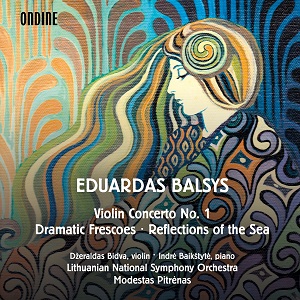
He was head of the composition department a the Conservatory of the Lithuanian SSR. As such, he shaped the next generation of Lithuanian composers.
Balsys' own style was shaped by politics. This release presents three works tracing his development over three decades.
When Balsys graduated from the Leningrad Conservatory, Lithuania was in the USSR. Soviet rules required classical music to be accessible. Lithuanian authorities wanted to keep their cultural identity. So the music had to also be "folkloric."
Balsys' 1954 Violin Concerto No. 1 manages to do both. And sound like a coherent work as well. The rules seem to do little more than provide a framework for his fertile imagination.
Balsys was also a gifted orchestrator. The innovative instrumental combinations he uses in this concerto make it sound fresh. And take it beyond the bounds of the state mandates.
By the mid 1960s the rules had relaxed. As one can hear in The Dramatic Frescoes for violin, piano, and orchestra (1965). Balsys explores some formerly forbidden techniques in this piece.
Some of it sounds dodecophonic, and other parts tonal a la Hindemith. He also mixes in popular forms of dance music. The liner notes call Balsys a "moderate modernist." And that's an apt description of The Dramatic Frescoes.
The Reflections of the Sea (1951) was composed three years before Balsys' death. There were no longer state regulations on composition. This is definitely the most dissonant of the works recorded here.
But it's still a tonal work. Sections reminded me of late Shostakovich. Other parts, though, sounded like nobody else. Balsys had an original voice. And this time it was unchecked.
The Lithuanian National Symphony Orchestra directed by Modestas Pitrenans does this music credit. The ensemble sound is rich and full -- and precise.
Violinist Dzeraldas Bidva delivers an exceptional performance of the violin concerto. His tone has a pure, lyrical quality to it that adds to the beauty of the music.
I had never heard of Eduardas Balsys before auditioning this release. I very much want to hear more. A lot more.
Eduardas Balsys: Violin Concerto No. 1
Dramatic Frescoes; Reflections of the Sea
Dzeraldas Bidva, violin; Indre Baikstyte, piano
Lithuanian National Symphony Orchestra; Modestas Pitrenas, conductor
Ondine 1358
Wednesday, October 20, 2021
Quartetto Ascanio explores Paganini's influence

They continue with a quartet by Giovanni Serra, another teacher of Sivori. Also included is a quartet by Carlo Andrea Gambini. He was a fellow Genoese violinist and composer, and a contemporary of Sivori.
The Quartetto Ascanio has a beautifully blended ensemble sound. Despite the Paganini associations, these works push the technical limits of the instruments.
Instead, the composers seemed to focus on creating attractive, lyrical melodies. It's the singing quality of these pieces that comes through in the performances.
Serra dedicated his Quartet No. 4 to Camillo Sivori. It has plenty for the first violin to do. But unlike a quartet brillante, it's not for solo violin plus three. Rather, the other three instruments are on more equal footing with the first violin.
Gambini's Quartet in E minor is an interesting work. To my ears, stylistically it seemed somewhere between Mendelssohn and Schumann. And that's not a bad place to be. Gambini knew how to write for strings. This quartet sounds like it could be as satisfying to play as it is to listen to.
All the works receive world recording premieres with this release. This unexplored repertoire is both pleasurable and substantial. I enjoyed the music the first time I heard the album. And I appreciated the skills of these composers with each additional hearing.
Recommended for chamber music enthusiasts. And anyone else who appreciates a well-turned melody.
Sivori, Gambini, Serra
Chamber music in Genoa after Nicolo Paganini
Quartetto Ascanio
Dynamic CDS 7905
Tuesday, October 19, 2021
Paul Wranitzky Symphonies Anticipate Beethoven
As popular as Paul Wranitzky was in 1800s Vienna, he remains all but unknown today. And that's also why a release of never-heard-before recordings is so exciting.
Wranitzky moved to Vienna from Moravia in the 1770s to seek his fame and fortune. And he found it.
As a composer, his music rivaled Haydn's in popularity. And he was in demand as a conductor -- he premiered Beethoven's first symphony.
The symphonies in this release show that Wranitzky's compositional skill rivaled Haydn's. Like Haydn, he could take the simplest note combination and build an entire symphony out of it. And make it sound both logical and surprising. Wranitzky also seemed a little more interested in orchestration than Haydn.
His Symphony in D minor "La Tempesta" simulates a storm in the final movement. He does so through his orchestration, particularly with his use of percussion. And his storm symphony anticipates Beethoven's by fourteen years!
The other two symphonies on this release date from the early 1790s. They also resemble Haydn's of the same era in quality.
Czech Chamber Philharmonic Orchestra Pardubice directed by Marek Štilec delivers some excellent performances. Wranitzky was closer to Haydn than Beethoven in style. A big orchestra crashing into the climaxes isn't necessary. The CCPOP plays forcefully when needed. But the lightness and clarity of their sound seem appropriate with Wranitzky's aesthetic.
When Wranitzky died at age 52 in 1808, he had composed 44 symphonies. This release presents three of them. I'm very curious to hear more. If you love the symphonies of Haydn and Mozart, you'll like the symphonies of Wranitzky -- at the very least.
Paul Wranitzky: Orchestral Works, Vol. 2
Symphonies – ‘La Tempesta’; Op. 16, No. 2; Op. 33, No. 3
Czech Chamber Philharmonic Orchestra Pardubice; Marek Štilec, conductor
Naxos 8.574255
Monday, October 18, 2021
Georg Caspar Schürmann - a rediscovered master
Schürmann served the Duke of Brunswick-Wolfenbüttel for 54 years. As court composer, he set a musical standard many aspired to.
The court at Wolfenbüttel Castle had a long tradition of musical excellence. Michael Praetorius had served as Kapellmeister in the 1590s.
When Schürmann arrived in 1707, he inherited a choral and instrumental ensemble of the highest caliber. And he used those resources to great advantage.
The three cantatas presented here show Schürmann at his best. The works are for solo voices only, without choruses. They showcase Schürmann's skill at writing for the human voice.
Each line is beautifully sculpted without being overly florid (a no-no for sacred music in this Protestant court). They also attest to the quality of singers available to the composers.
Some of the arias border on the operatic, which is no surprise. Schürmann wrote over thirty operas (only a few of which survive). His use of dissonance, and delaying resolution to heighten the emotion, works as well in the chapel as it does on stage.
Manfred Cordes and the Weser-Renaissance Bremen perform to their usual high standards. The soloists sing in clean, clear tones with minimal vocal ornamentation. The instrumental ensemble provides the right level of support at all times, even when timpani and brass weigh in.
Schürmann wrote a vast quantity of music, in all types of genres. It's a shame only a small amount of it survived. Based on these three works, I'd like to hear more.
Georg Caspar Schürmann
Nimm das Opfer unsrer Hertzen Cantatas
Weser-Renaissance Bremen; Manfred Cordes, director
CPO 555 374-2
Friday, October 15, 2021
#ClassicsaDay #OctoberOctet Week 1
10/04/21 Felix Mendelssohn: String Octet in E-flat major, Op. 20
Mendelssohn composed his octet at age 16. It was written for four violins, two violas, and two cellos -- in essence two string quartets.10/05/21 Nikolay Afanasyev: Double String Quartet in D major
Afanasyev considered this a very different type of composition than a string octet. Though the instrumentation is the same, he considered this 1875 work as one for two separate quartets interacting with each other.10/06/21 Dimtri Shostakovich: Two Pieces for String Octet Op. 11
Shostakovich used Mendelssohn's model for his string octet. It features a prelude and a scherzo, and was written in memorium to a friend.10/07/21 Franz Krommer - Octet Partita OP. 57 in F major
This was originally titles "Harmonie," and was a nonet (2 oboes, 2 clarinets, 2 horns, 2 bassoons, 1 contrabassoon). It was eventually retitled, as the contrabassoon part simply doubles the second bassoon at the octave and can be dropped.10/08/21 Max Bruch: String Octet in B-flat major, Op. Posth.
In 1920 Bruch reworked his String Quintet no. 3, transforming it into a string octet. It was one of the last works he completed before his death in 1920.Thursday, October 14, 2021
Louse Farrenc violin and piano music has timeless appeal
Daniele Orlando and Linda Di Carlo deliver wonderfully expressive performances. Farrenc had a rare melodic gift, and Orlando's violin practically sings them. Farrenc was also a concert pianist.
Most of her chamber works have substantial piano parts. Di Carlo plays with assurance and authority, an equal partner to Orlando at every turn.
The album starts with the Variations concertantes sur un air suisse. This is salon music, meant as light entertainment. But it's of exceptional quality. Schumann remarked it was "o sure in outline, so logical in development." Indeed so. The music is light, but not cliche.
Her two violin and piano sonatas were also well-received at the time. Her first violin sonata from 1848 is a fully formed complex work. One critic noted it was in the "austere classical style reminiscent of the great masters." To me, the sonata suggested Mendelssohn as inspiration.
Farrenc's second sonata was a favorite of Joseph Joachim. Brahms would compose his violin concerto for Joachim, so high praise indeed! Here the inspiration seems closer to Beethoven. But what Farrenc does with that inspiration is purely her own invention.
It's still a mystery to me that music this well-received should lapse into obscurity. There's nothing old-fashioned about Farrenc's compositions. They sound as fresh today as any music of "the great masters." The excellent performances of Orlando and Di Carlo just deepen that mystery.
Highly recommended.
Louise Farrenc: Music for Violin and Piano
Daniele Orlando, violin; Linda Di Carlo, piano
Brilliant Classics 95922
Wednesday, October 13, 2021
Marcel Poot Symphonic Survey Revealing
Tuesday, October 12, 2021
Jouni Somero surveys Selim Palmgren piano repertoire
The album opens with Three Piano Pieces, Op. 4, written in 1893. Palmgren was 15. These are charming, unprepossessing pieces with traces of Brahms and Schumann.
Palmgren wrote his Lyrical Intermezzo, Op. 8 after he began his musical studies in Berlin. The music is more sophisticated, and the piano technique is also more challenging.
The latest work on the album is Sun and Clouds, Op. 102. It's also the longest piece on the album. Each of the twelve movements depicts a different month of the year.
Though written during the height of the second world war, the music is sunny and optimistic. The textures are much thicker than those in Palmgren's early works. And the technique more advanced -- as befitting a student of Busoni.
Jouni Somero is an exceptional performer. And so are his interpretations of his fellow countryman's music. Somero plays with authority. He brings out the simple charms of Palmgren's early works. And delivers his mature pieces with power and verve.
The more of Palmgren's music I hear, the more I want to hear. Looking forward to volume 4.
Selim Palmgren
Complete Piano Works 3
Jouni Somero, piano
Grand Piano GP869
Monday, October 11, 2021
Joseph Boulogne Symphonie Concertantes solid entertainment
Joseph Boulogne was one of the most brilliant composers and violinists in France -- and a person of color. Still, he was a prominent and influential musical figure in 1770s Paris. He was renowned as a conductor, performer, and composer.
Boulogne was an extraordinary violinist, and composed fourteen concertos for himself to perform. He also wrote four symphony concertantes, featured on this release.
The relationship between Boulogne and Mozart isn't clear. But there is a clear relationship between their musical styles. Boulogne's music has the stately elegance of Mozart's. Themes are distinctive, and well-developed throughout the compositions.
The Czech Chamber Philharmonic Orchestra Pardubice has recorded many Classical Era composers. And their performances here are all I expected. The music is light but not slight. The ensemble plays with both accuracy and energy.
The sinfonia concertantes mostly feature two solo violins (one includes a viola). Yuvy Revich and Libor Jezek are the violin soloists. They give a good account of the music and a hint of what Boulogne's own playing may have sounded like.
Also included is the first of Boulogne's two Opus 11 symphonies. To me, the work seemed closer to Haydn than Mozart. I later read that the symphony may be spurious. Perhaps so. It does seem a little out character compared to the rest of the album.
Nevertheless, making more of Boulogne's music available is always a good thing. This isn't just well-crafted music by a composer of color. It's well-crafted music. Period.
Joseph Boulogne, Chevalier de Saint-Georges
Symphonies concertantes; Symphony in G major
Yury Revich, Libor Jezek, violins; Pavla Hansova, viola
Czech Chamber Orchestra Pardubice; Michael Halasz, conductor
Naxos
Friday, October 08, 2021
#ClassicsaDay #SymYesNo Week 5
For the month of September, the Classics a Day team chose a controversial theme. There is a small subset of symphonic works within the classical repertoire that appear misnamed. Most composers choose their titles carefully. But when the title runs counter to expectations, disagreements arise.
What does the title "symphony" mean? Can a composition be a symphony in everything but name? Or could a work titled "symphony" be a different type of composition in disguise?
For this month's challenge, I included a poll with each post to let the readers decide. Here are the posts -- and the poll results -- for the final week of #ClassicsaDay #SymYesNo (Symphony? Yes/No).
09/28/21 Richard Straus - Ein Heldenleben
Strauss' original intention was to compose a heroic symphony modeled after Beethoven's Eroica. It eventually became a massive tone poem. But does its grandeur and complexity make it symphony after all?09/29/21 Franz Liszt - Faust Symphony
"A Faust Symphony in three character pictures" is the full title. So is this a symphony, or simply three interrelated tone poems strung together?09/30/21 Berlioz - Symphonie Fantastique
Originally Berlioz called this a program symphony. Later on, he downplayed the program (but never fully got rid of it). So is this a symphony, or just the scariest valentine ever?Friday, October 01, 2021
#ClassicsaDay #SymYesNo Week 4
For the month of September, the Classics a Day team chose a controversial theme. There is a small subset of symphonic works within the classical repertoire that appear misnamed. Most composers choose their titles carefully. But when the title runs counter to expectations, disagreements arise.
What does the title "symphony" mean? Can a composition be a symphony in everything but name? Or could a work titled "symphony" be a different type of composition in disguise?
For this month's challenge, I included a poll with each post to let the readers decide. Here are the posts -- and the poll results -- for the first week of #ClassicsaDay #SymYesNo (Symphony? Yes/No).



